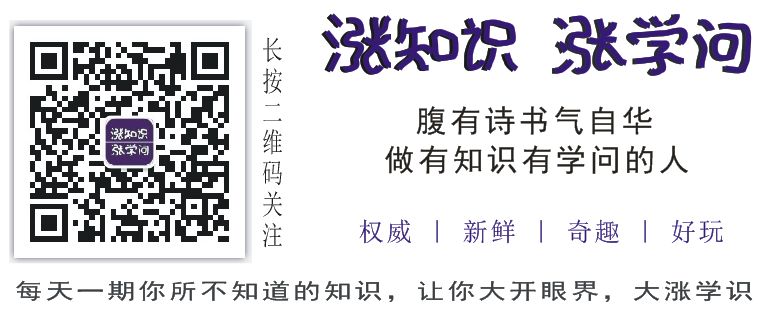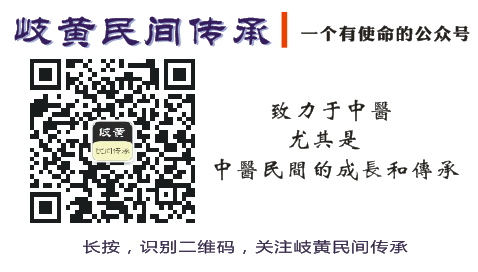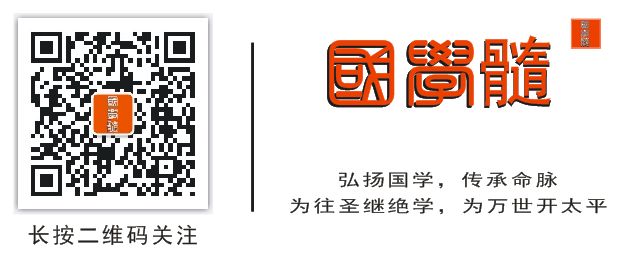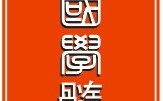
Promoting Traditional Chinese Medicine, Preserving Its Essence
Continuing the legacy of the sages, paving the way for future generations

The practice of Qi Huang (Traditional Chinese Medicine) holds a crucial and significant position in the study of traditional culture, being an inseparable part of it. Throughout the long river of history, it has condensed the wisdom of the Chinese people, contributing greatly over the past five thousand years to safeguard against disasters and ensure the prosperity of the Chinese nation. This long historical journey has also accumulated a wealth of medical civilization, making it a brilliant pearl. Daily sharing of Qi Huang’s medical arts aims to promote and benefit humanity.

Five Methods of Bloodletting and Needling by Dr. Zhou Deyi
Dr. Zhou Deyi is a renowned TCM physician from Anhui Province, nearing eighty years of age, with over fifty years of clinical experience, particularly skilled in acupuncture. His bloodletting technique is unique. The author has learned deeply from Dr. Zhou during clinical practice and will summarize his bloodletting methods for further dissemination.
1. Segmental Bloodletting Method
This method involves selecting acupuncture points based on the location of the disease. For conditions affecting the head, the Taiyang (Temple) point is needled; for issues above the navel, the Shizhu (Cubital Fossa) or Quchi (Elbow) points are used; for conditions below the navel, the Weizhong (Middle of the Popliteal Fossa) point is needled. These points are located near superficial major veins, making them suitable for bloodletting. The Ling Shu states that the Taiyin, Jueyin, and Taiyang meridians are all blood-rich meridians. For conditions with excess blood, bloodletting is advisable, and the Taiyang point is an extraordinary point for treating head and facial diseases effectively. The Shizhu and Weizhong points are associated with organ disorders, hence Dr. Zhou’s selection.
During clinical practice, it is often necessary to combine other points. This method is frequently used for deeper conditions or organ diseases, where there are both local and systemic symptoms.
For example, for headaches with red, swollen eyes and fever, bloodletting at the Taiyang point and needling Hegu (LI4) is effective; for headaches and sore throat with fever, bloodletting at the Taiyang point and needling Shaoshang (LU11) and Quchi (LI11) is recommended; for breast swelling and pain with fever, bloodletting at the Shizhu point combined with local heat application; for upper abdominal pain and vomiting with fever, bloodletting at the Shizhu point and needling Zhongwan (CV12) and Liangqiu (ST34); for right lower abdominal pain with constipation and fever, bloodletting at the Weizhong point and needling Zusanli (ST36) and Tianshu (ST25); for lower abdominal pain with purulent blood in stool and fever, bloodletting at the Weizhong point and needling Quchi (LI11) and Tianshu (ST25).
2. Meridian Bloodletting Method
This method is guided by the theory of “where the meridian passes, the treatment is applied” to address diseases occurring along a specific meridian or multiple meridians through bloodletting along the meridian. During clinical practice, the disease is categorized by meridian, and bloodletting is performed along the corresponding meridian pathways and collateral channels. Dr. Zhou also mentioned: “If it is not visible, take it from above and below.”
This means that this method is not limited to acupuncture points or painful areas but can also involve bloodletting at superficial veins along the meridian’s pathway, emphasizing that “it is better to lose the point than to lose the meridian.”
For example, for acute low back pain on both sides of the spine, which is due to obstruction of the Foot Taiyang Meridian, bloodletting at the Weizhong point and needling the most painful area of the lower back; for pain along the spine, bloodletting at the Du Meridian with needling Renzhong (GV26) and Qihai (CV6); for wind-heat affecting the throat with difficulty breathing, bloodletting at Shaoshang (LU11) and needling Tianzhu (BL10); for vertex headache, dizziness, and eye swelling due to obstruction of the Foot Jueyin Meridian, bloodletting at the Baihui (GV20) and Taiyang points, and needling Fengchi (GB20).
3. Syndrome Differentiation Bloodletting Method
This method is guided by the theories of organ differentiation, Qi and blood differentiation, and meridian differentiation to select points for bloodletting based on the identified syndrome.
For example, for women with dysmenorrhea and cold pain in the lower abdomen, where abdominal pain precedes menstruation, indicating Qi stagnation and blood stasis, bloodletting at the Sanyinjiao (SP6) point, which benefits the liver and kidney and regulates menstruation, is effective, similar to the Si Wu Decoction. Needling Qihai (CV6) can help regulate Qi; moxibustion at Guanyuan (CV4) can warm the uterus, achieving the effect of regulating Qi and nourishing blood.
For skin itching and redness, indicating heat in the blood, bloodletting at Sanyinjiao (SP6) and Xuehai (SP10) can clear heat and regulate menstruation, supplemented by needling Quchi (LI11) to dispel wind and nourish the blood; for acute ankle sprains, indicating local Qi stagnation and blood stasis, bloodletting at Ah Shi and Taichong (LR3) can promote Qi and invigorate blood flow; for carbuncles and boils, based on the principle that “all pain and itching belong to the heart,” bloodletting at the Quchi (LI11) point can drain heat from the heart. If accompanied by fever, needling Dazhui (GV14) and Quchi (LI11) is recommended. If the sore appears on the neck and back, bloodletting at the Weizhong point can clear heat from the Taiyang Meridian; if it appears on the ribs, bloodletting at Yanglingquan (GB34) can clear heat from the Shaoyang Meridian; if it appears on the limbs, bloodletting at the corresponding meridian points or at Ah Shi can drain heat and detoxify.
4. Local Bloodletting Method
This method involves bloodletting at the site of the disease. It can be performed at acupuncture points or on localized areas, making it suitable for superficial and localized conditions.
For example, for swollen and stiff tongue, bloodletting at Jinjing (LU10) and Yuye (LU11); for toothache and gum swelling, bloodletting at the affected area and needling Hegu (LI4); for psoriasis with itching and scaling, using plum blossom needles for localized bloodletting and cupping; for late-stage filariasis with “rubber leg,” bloodletting around the affected leg and needling Zusanli (ST36) and Sanyinjiao (SP6); for joint sprains and swelling, bloodletting at the painful area.
5. Emergency Bloodletting Method
This method is specifically used for emergencies and critical conditions, characterized by four main features:
1. Located at the distal extremities or at the twelve jing points;
2. At superficial major veins;
3. Using extraordinary points;
4. Selecting points from the Du Meridian and Pericardium Meridian.
This method provides strong stimulation and rapid results, promoting circulation, expelling heat, and awakening consciousness.
For example, for syncope with inability to speak, bloodletting at the Shixuan (Ten Diffusions) points and needling Renzhong (GV26); for grand mal epilepsy, bloodletting at Quchi (LI11) and Weizhong (BL40), and needling Dazhui (GV14) and Jiuwei (GV15); for stroke with locked jaw, bloodletting at the Taiyang (Temple), Quchi (LI11), and Weizhong (BL40) points, or at the twelve jing points, and needling Yongquan (KD1) and Laogong (PC8); for snake bites on the upper limb, bloodletting at Quchi (LI11) and Bayejiao (Eight Evils); for bites on the lower limb, bloodletting at Sanyinjiao (SP6) and Bayinfeng (Eight Winds); for heat stroke, bloodletting at Quchi (LI11) and Shixuan (Ten Diffusions), and needling Yongquan (KD1).
Conclusion
The bloodletting method has effects of dispelling stasis, promoting new blood, unblocking meridians, reducing swelling, alleviating pain, and clearing heat. It is mainly used for conditions of excess heat and stasis pain. The five methods described above can be flexibly combined by Dr. Zhou. The needles used are typically three-edged needles, or sometimes thicker needles or plum blossom needles, with the amount of bloodletting depending on the condition, generally aiming for about 7ml. The technique should be light and quick, and after bloodletting, do not press on the puncture site; allow it to stop bleeding naturally.
If blood does not flow freely, it is necessary to massage around the acupuncture point or use cupping; if there are superficial inflammations or ulcers, moxibustion can be used as an adjunct.
Strict disinfection is required before the procedure, and caution should be exercised in patients with coagulation disorders, weak constitution, and pregnant women. Additionally, bloodletting should ideally be performed on punctured vessels; needling should be quick and stop immediately upon puncturing, regardless of whether blood flows. The two methods are distinct.Follow the public account of Guoxue Sui for more content.
| I Copyright Statement:○The content of this article is sourced from online collections.○ Copyright belongs to the relevant rights holders. If there are any improper uses, please contact us for immediate removal.I Submission Email:[email protected]I Warning:All articles published on this platform are for the purpose of popularizing TCM knowledge and are for reference and learning by professional TCM practitioners only. They do not constitute prescriptions or any recommendations or guidance. Please do not blindly self-medicate; this platform does not bear any responsibility for any consequences arising from this. If needed, please use under the guidance of a physician. All articles published on this platform represent the author’s views. |
Recommended Reading【Guoxue Sui】Selected excellent articles from the public account:① Traditional Chinese Painting: A Step-by-Step Guide to Painting the Impressionistic “Cockscomb Flower and Longhorn Beetle”② From Reproductive Love to Immortal Romance, the Mysteries of Bedroom Techniques—Exploring the Meaning of “Fengshen Yanyi” (Part 2)③ Zhu You’s Technique: The Secret of Soul Retrieval【Knowledge and Learning】Selected excellent articles from the public account:① The Qin Dynasty had the “Four Great Legions” that unified China; what was the ultimate fate of the legion that swept through the world?② This woman had “the talent of Lü Bu but none of his evil”, ruling from behind a curtain, her life was quite legendary.③ Chiang Kai-shek’s slap created the image of a “just judge”; but why did he not dare to strike? 【Qi Huang Folk Inheritance】Selected excellent articles from the public account:① The miraculous folk method of transferring sores and diseases, moving serious sores and tumors to less critical areas—clinical applications of the method of transferring sores and diseases.② Difficulty falling asleep, frequent dreams, shallow sleep, waking easily, waking at set times, and insomnia—Professor Xu Hao’s experience in diagnosing and treating insomnia.③ The Lin family’s century-old experience in treating bones: 188 cases of fractures treated with Lin Rugaos’ Bone Supplementing Pills.④ Irregular sexual life leading to premature ejaculation—Professor Li Yuaqing’s clinical experience in treating male diseases combined with anxiety and depression.⑤ Introducing an ancient secret recipe—Da Cheng Dan Fang.⑥ The formula for resolving phlegm and dissipating masses to treat gastric cancer, intestinal cancer, esophageal cancer, and other digestive tract tumors and other malignant tumors.⑦ Self-formulated Zhenxiong Decoction for treating 76 cases of impotence, balancing Yin and Yang, addressing both deficiency and excess, and achieving a wonderful remedy.⑧ Yijing Decoction for treating infertility, impotence, premature ejaculation, lumbar and knee soreness, fatigue, and other conditions—Professor Wang Jinsong’s clinical insights.For more exciting and excellent content, please check the historical articles.



